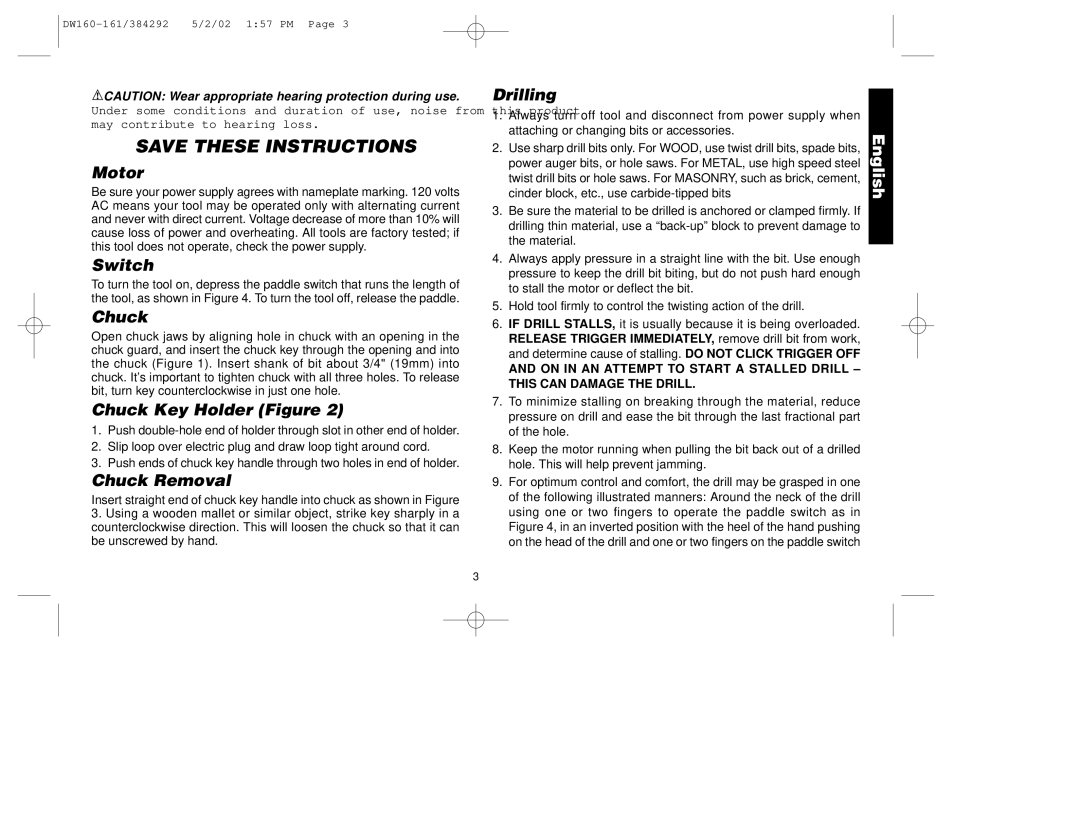DW160, DW161, 384292-00 specifications
Black & Decker has long been synonymous with durability and innovation in the power tools market. Among their diverse range of offerings, the models Black & Decker 384292-00, DW161, and DW160 stand out for their unique features, technological advancements, and user-friendly characteristics that cater to both professionals and DIY enthusiasts.The Black & Decker 384292-00 is a versatile power tool designed for various applications. One of its main features is its powerful motor, which provides ample torque to tackle tough tasks with ease. The ergonomic design enhances user comfort, allowing for longer periods of use without fatigue. Additionally, this model boasts variable speed settings, enabling users to adjust the tool’s performance based on the task at hand. Its robust build quality ensures longevity and reliability, making it an essential addition to any toolkit.
Moving on to the DW161, this model is particularly favored for its precision and ease of use. It incorporates advanced features such as a depth adjustment mechanism, which allows users to set the cutting depth with remarkable accuracy. The DW161 is also equipped with a user-friendly switch design, facilitating seamless operation. Durability is a hallmark of this model, with heavy-duty construction that can withstand the rigors of professional use. The dust-sealed components enhance its lifespan by preventing debris from entering critical areas.
The DW160 is another noteworthy offering from Black & Decker, designed for consistent performance in demanding environments. It features a unique dual-action design that enhances cutting efficiency. With a lower vibration level, users can experience more control during operation, reducing the risk of errors. This model comes with an integrated safety feature that automatically shuts off in case of overheating, ensuring user safety while enhancing tool longevity.
Overall, Black & Decker’s 384292-00, DW161, and DW160 models are remarkable tools that combine powerful performance, innovative technologies, and user-centric features. Their durability, versatility, and ease of operation make them ideal choices for a wide range of applications, ranging from heavy-duty projects to intricate tasks. By investing in these tools, users can expect reliable performance and the ability to tackle any challenge that comes their way. Each model showcases Black & Decker's commitment to quality and innovation in the power tools landscape.

